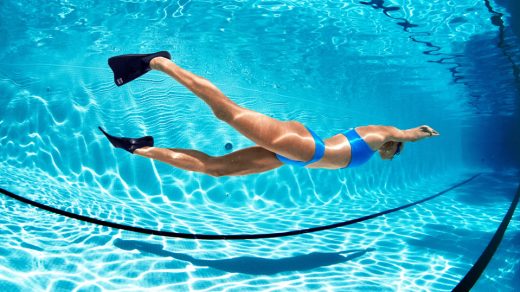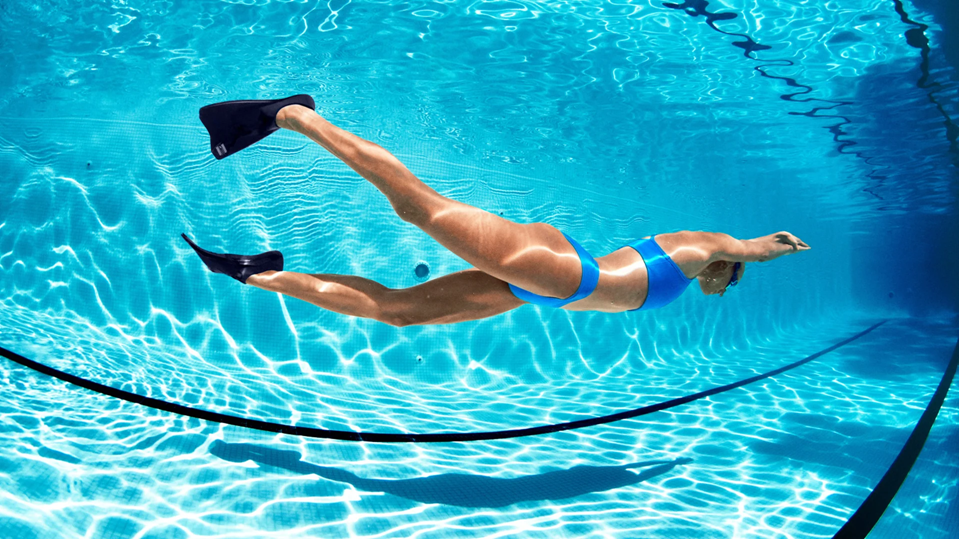How Speedo plans to compete with athleisure after its Olympic moment
August 14, 2024
How Speedo plans to compete with athleisure after its Olympic moment
Olympic swimmers won gold in Speedo. Now how does the company get regular people to wear the brand while they work out?
BY Lilly Smith
Hundredths of a second. That’s the difference between being on the podium and off it at the Olympic games. Swimmers do everything they can to train for it, earn it, and—with high-tech swimsuits—game it.
At this year’s Olympic Games, which came to a close this past on August 11, swimwear company Speedo outfitted more than 170 athletes in its high tech FastSkins, made in collaboration with engineers from NASA. Caleb Dressel, who earned five golds at Tokyo, and two for relays in Paris, wore Speedo. American swimmer Regan Smith, who secured two gold medals and three silvers, wore Speedo. France’s record-setting Léon Marchond won four gold medals in Speedo. That’s incredible brand visibility. But the company is now looking to extend its sales outside the four year hype cycle of the Olympics.
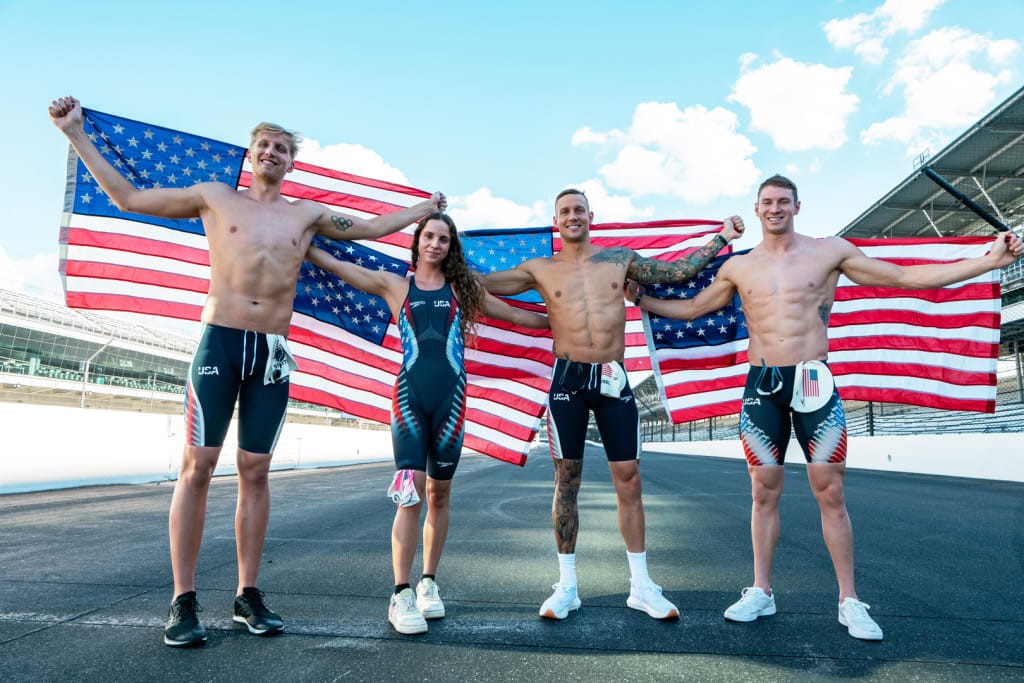
An Olympic Legacy
That requires significant brand repositioning. Speedo is historically known for competitive swimming and sports performance. According to the company, Speedo sees about a 10% increase in sales each Olympic cycle. (Speedo declined to share other internal sales figures.) It’s now aiming to expand what high performance means in the eyes of the consumer in order to achieve sales consistency and broaden its consumer base; capitalizing on the visibility Olympic athletes bring to the brand and parlay it into year round, year over year sales.
While Speedo means speed performance in an Olympic or collegiate pool, the brand wants consumers to perceive the company as a performance brand in other arenas, like comfort and sun protection for the everyday swimmer.
The brand has a long legacy in sports fabric innovation. In 1928, Speedo founder Alexander McRae invented the racerback style in which a singular wide strap runs between the shoulder blades, allowing for greater range of movement. The company was the first to introduce nylon fabrics into swimwear, replacing the soggier standby, wool, and of course introduced the famously barely-there brief style that the company has become know for, as well.
Speedo has a long Olympic affiliation, too: In 1932, Australian swimmer Claire Dennis was the first swimmer to secure gold in a Speedo suit. TYR, another swimsuit company that outfitted U.S. Olympian Katie Ledecky, was founded just shy of 60 years after Speedo in 1985. That legacy gives Speedo significant brand equity in the sports market, but it can also pigeonhole the brand as a specialist for athletes. That’s what they want to change.
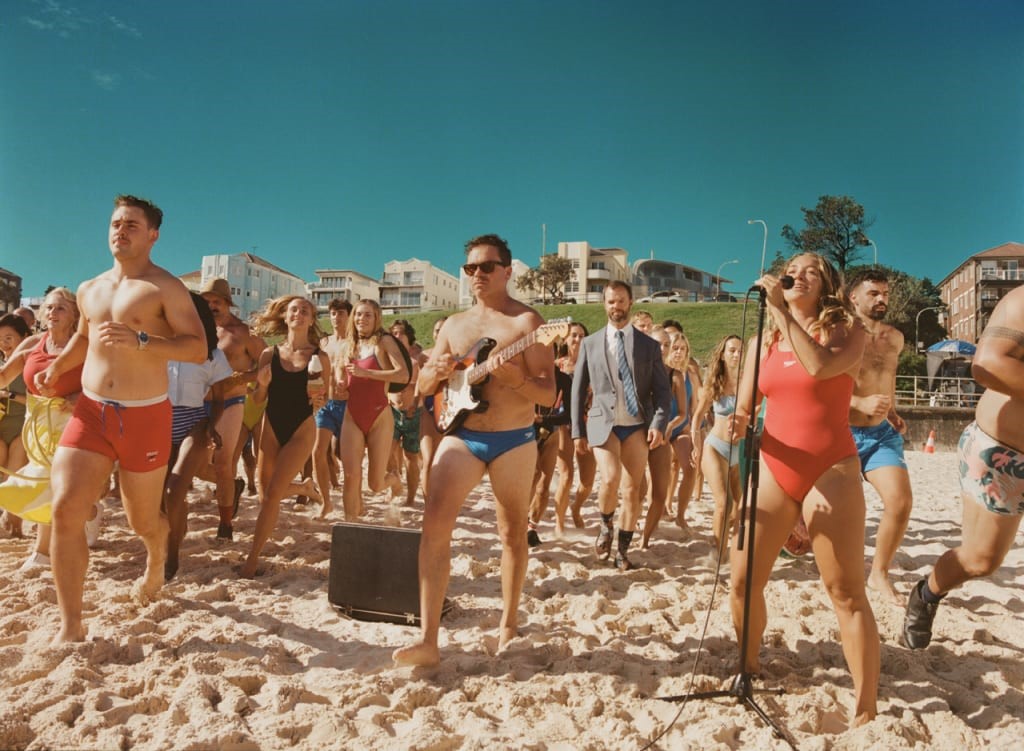
Building the Speedo brand for broad appeal
To do so, Speedo is launching a broad campaign to shift that consumer perception. Earlier this year, it launched an ad spot called “Go Full Speedo,” which showcases people of all sorts wearing a variety of Speedo styles at the beach. A man sheds his business suit for Speedo trunks; another directs traffic in them. An older woman wearing a Speedo suit and holding a skateboard heads to the beach. Others join and jump into the ocean.
“Everything you need (not a lot) to get out there and ooze the sort of confidence that takes you places,” reads the copy on the collection homepage. “Even if those places are just the local pool, or the deep ocean. Or a padding pool in your backyard. Wherever you go. Go Full Speedo.” The video uses warm, saturated colors, and conversational copy. This ad isn’t targeting athletes.
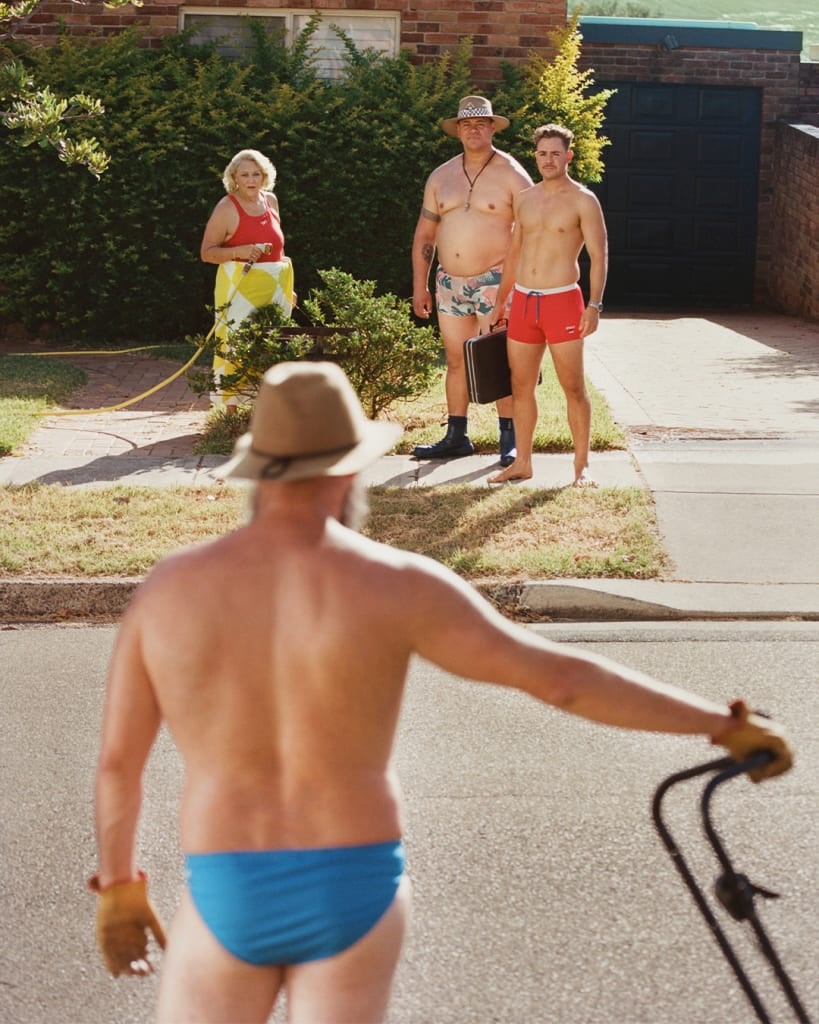
Speedo also refreshed the visual brand with creative agency Anomaly. The brand introduced a vivid chartreuse green as its new core color, combining olympic gold yellow with blue they pulled from pool water. There’s also a refreshed, athletic typeface with slight changes to counters, corners, and terminals, with shapes inspired by swimmers and divers.
“We wanted to use the Olympics to reprise the brand,” Speedo senior vice president Simon Breckon says, noting that the company is known for its “2% pinnacle athletes” but wants to harness fitness driven-consumers, which he considers to be a high-growth opportunity. “It’s about an invitation to join,” says Breckon. We have a visual identity that is very democratic. The curvature [of the typeface] is about bringing the brand closer with a bit more of a human factor.”
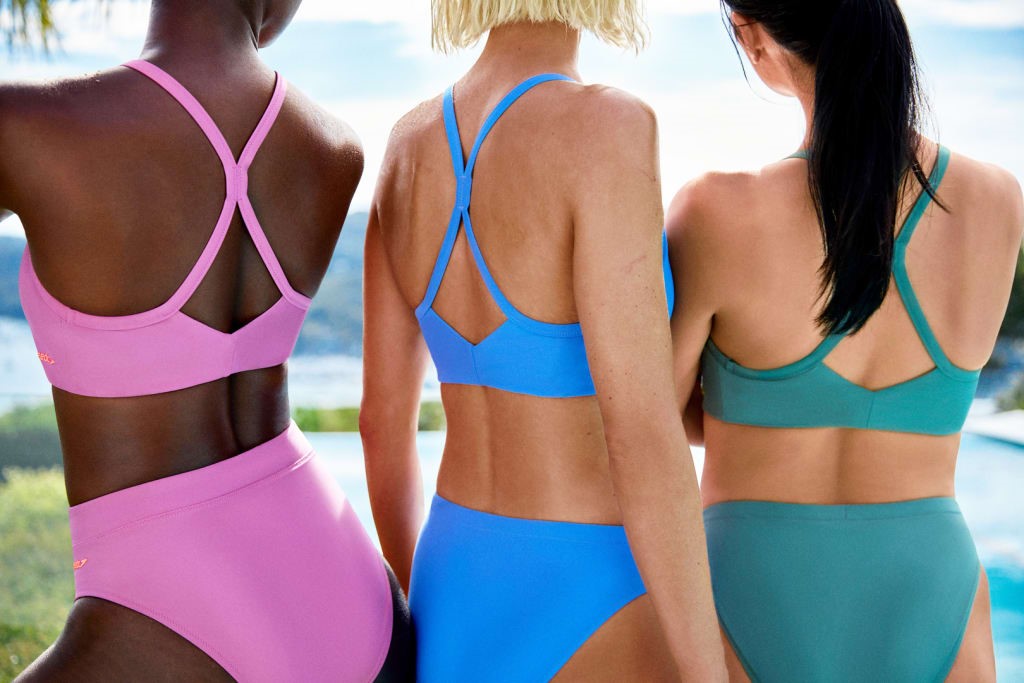
Versatile fabrics for versatile end uses
The company is also building on this idea with its product lines, which include expanded styles to be released this spring with a wider variety of outseams, inseams, and necklines that change coverage and shape, as well low profile straps where swimmers need more support or flexibility, and a focus on styles geared toward leisure, like two-piece women’s swimsuits. (The women’s one piece suit is a core product.) “We’re launching a lot of product that expands the aperture of what swimming means,” says Speedo senior vice president of global design Doug Conklyn, noting that they are “taking those millions of body scans”—which the company uses to design suits—“and applying them to the average swimmer.”
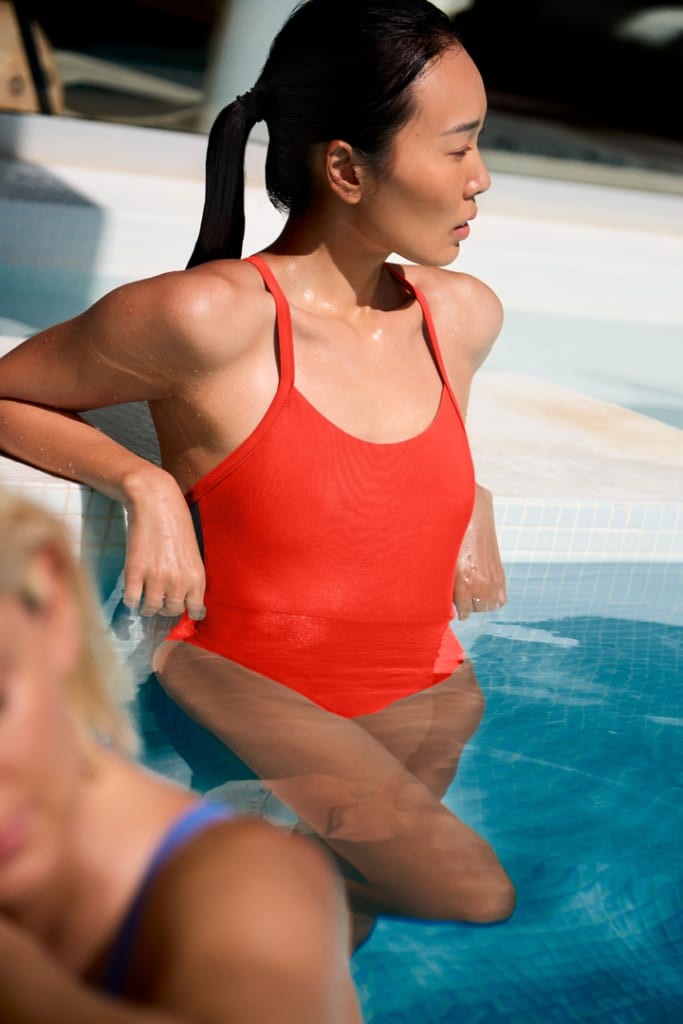
The company is also taking cues from athleisure brands and expanding its fabric options to focus on comfort and stretch in addition to functionality, like chlorine resistance, which Conklyn says swimwear brands typically prioritize.
“That idea of stretch has really permeated swimwear to allow better fit,” says Conklyn.”There’s size and then there’s shape. The fabrics that have stretch allow a wider allowance of conformity for different body parts. We make intimate products that fit against the most intimate parts of your body. We’re working on a number of fabrics that focus on that soft touch.”
Conklyn views sun protection as an expanding category, and the company is responding by designing suits with a minumum level of sun protection. It is also developing more quick dry options, like its fitness short, which Conklyn calls the “SUV of swim trunks” because of its stretch and versatility as a workout short or swim short.
Speedo wants to orient the company away from just being associated with the lap lane. “Our position starts on the water and then goes onto the land,” Conklyn says, adding that he runs, lifts weights, and swims in the fitness short. Breckon adds that this repositioning was also due to their consumer research. Trainers don’t want to deal with outfit changes for working out in water versus on dry land, he says.
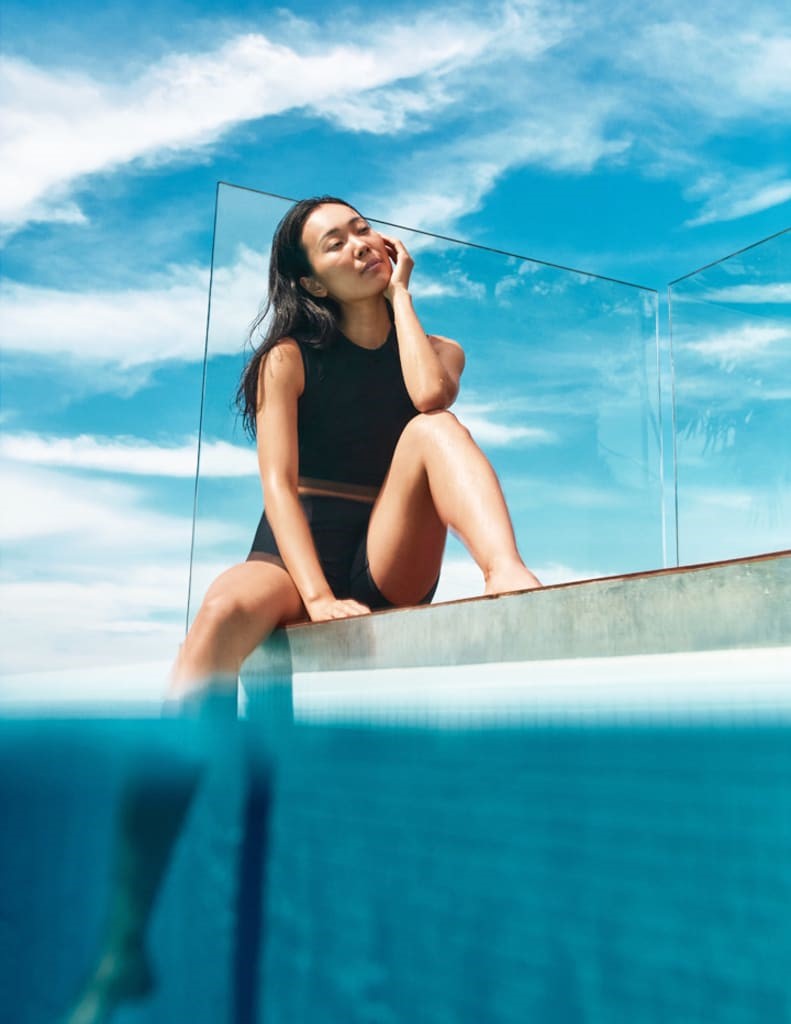
Giving Speedo some swagger
“Speedo can be accused of being too serious of a brand because of our commitment to performance,” says Conklyn, but should the company’s efforts pay off, they expect that consumer perception to shift toward a more approachable athletic brand with everyone appeal. By the end of 2024, Breckon hopes consumers start to see that “Speedo has some swagger and personality,” and will start to “showing up in cool places” over the next few years.
That’s not to say Speedo has lost sight of the next Olympics. “We’re well down the path of developing the suits for 2028,” Conklyn says.
ABOUT THE AUTHOR
Fast Company
(3)

